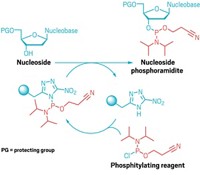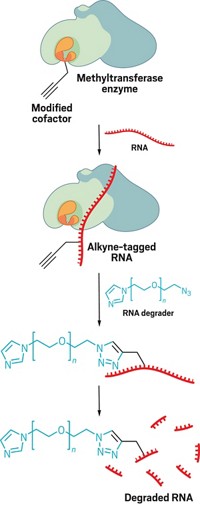Advertisement
Grab your lab coat. Let's get started
Welcome!
Welcome!
Create an account below to get 6 C&EN articles per month, receive newsletters and more - all free.
It seems this is your first time logging in online. Please enter the following information to continue.
As an ACS member you automatically get access to this site. All we need is few more details to create your reading experience.
Not you? Sign in with a different account.
Not you? Sign in with a different account.
ERROR 1
ERROR 1
ERROR 2
ERROR 2
ERROR 2
ERROR 2
ERROR 2
Password and Confirm password must match.
If you have an ACS member number, please enter it here so we can link this account to your membership. (optional)
ERROR 2
ACS values your privacy. By submitting your information, you are gaining access to C&EN and subscribing to our weekly newsletter. We use the information you provide to make your reading experience better, and we will never sell your data to third party members.
Biological Chemistry
Structural Switch Boosts DNA Delivery
Chemical modification improves properties of potential reagents for transfection
by Carmen Drahl
September 17, 2008

By changing the structure of a macrocyclic compound, a research team in Italy has created an efficient type of reagent for transfection, which is the delivery of DNA or RNA into cells (Org. Lett., DOI: 10.1021/ol801326d).
Genetic engineers use transfection reagents to alter a cell's gene expression and protein production. A team led by Francesco Sansone and Rocco Ungaro of the University of Parma now reports preliminary studies showing that a formulation containing a calix[4]arene macrocycle delivers DNA more reliably than a commercially available transfection reagent.
The team had previously modified the aromatic rings on calix[4]arenes with guanidinium groups, which are known to ferry compounds into cells. The macrocycles bound DNA, but they were inefficient at transfection and toxic to cells.
In the team's new calix[4]arenes, the attachment points for the guanidinium moieties are hydroxyl groups, to good effect. The new reagents have low toxicity and efficiently transport DNA into a variety of cells.
Traditional viral transfection agents can provoke an immune response, Sansone says. Lipid-based agents don't work in every type of cell, and most are poorly structurally characterized, confounding mechanistic studies aimed at improving them, he adds. The team now hopes to exploit calixarenes' synthetic flexibility to carry out such optimization studies.




Join the conversation
Contact the reporter
Submit a Letter to the Editor for publication
Engage with us on Twitter